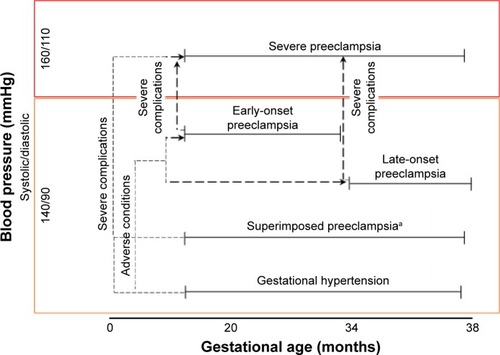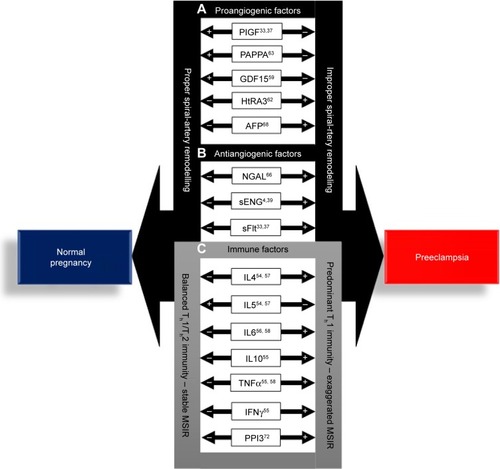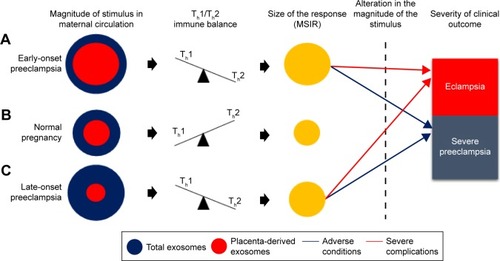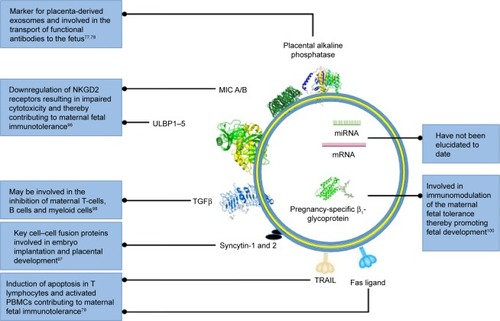Figures & data
Figure 1 Classification of hypertensive disorders in pregnancy.
Notes: Hypertensive disorders with preeclampsia subclassified into early- and late-onset preeclampsia. Adverse conditions are defined as conditions that increase the risk of severe complications. Adverse conditions and severe complications are categorized into the organ system affected (ie, central nervous system, cardiorespiratory, hematological, renal, hepatic, and fetoplacental), as described by Magee et al.Citation25 aHypertension present either at prepregnancy or that developed at 20 weeks prior to gestation.

Table 1 Overview of potential, combined and candidate biomarkers in preeclampsia
Figure 2 Potential biomarkers involved in the pathogenesis of preeclampsia (PE).
Notes: (A) Proangiogenic and (B) anti-angiogenic factors associated with improper spiral-artery remodeling in PE. (C) Immune factors associated with the pathogenesis of PE as a result of the predominant Th1 immunity of the disorder. +Significantly increased expression in comparison to normal pregnancy; −significantly lowered expression in comparison to PE pregnancies.
Abbreviations: MSIR, maternal systemic inflammatory response; Th, T-helper.

Figure 3 Hypothetical model of exosomes in relation to immunological and clinical outcomes in EOPE, LOPE, and normal pregnancy.
Notes: (A) In EOPE, an increase in placenta-derived and total exosomes in comparison to normal pregnancy mediates a shift toward Th1 immunity and thus results in an exaggerated MSIR. (B) In normal pregnancy, there is a balance between placenta-derived and total exosomes that mediates a shift toward Th2 immunity, thereby maintaining a balanced MSIR, a requirement for successful pregnancy. (C) In LOPE, the increase in total and decrease in placenta-derived exosomes in comparison to normal pregnancy mediates a shift toward Th1 immunity, which exaggerates the MSIR to a degree that does not exceed the MSIR in EOPE. (A, C) Alteration in the magnitude of placenta-derived and total-exosomes during the manifestation of LOPE or EOPE results in adverse conditions or severe complications that lead to the clinical manifestation of severe PE or eclampsia.
Abbreviations: EOPE, early-onset preeclampsia; LOPE, late-onset PE; MSIR, maternal systemic inflammatory response; Th, T-helper.

Figure 4 Schematic representation of key pregnancy-associated exosomal molecular cargo and their function.
Notes: This figure highlights key transmembrane and cytosolic proteins involved in immunomodulation during normal pregnancy. Key pregnancy-associated exosomal nucleic acids have not been identified to date. Common exosomal markers are not shown.
Abbreviation: PBMCs, peripheral blood mononuclear cells.

